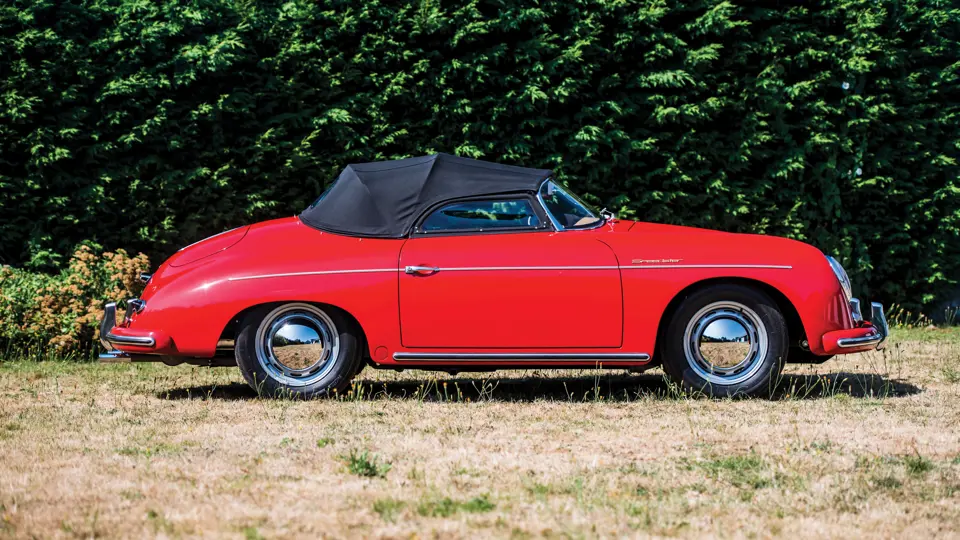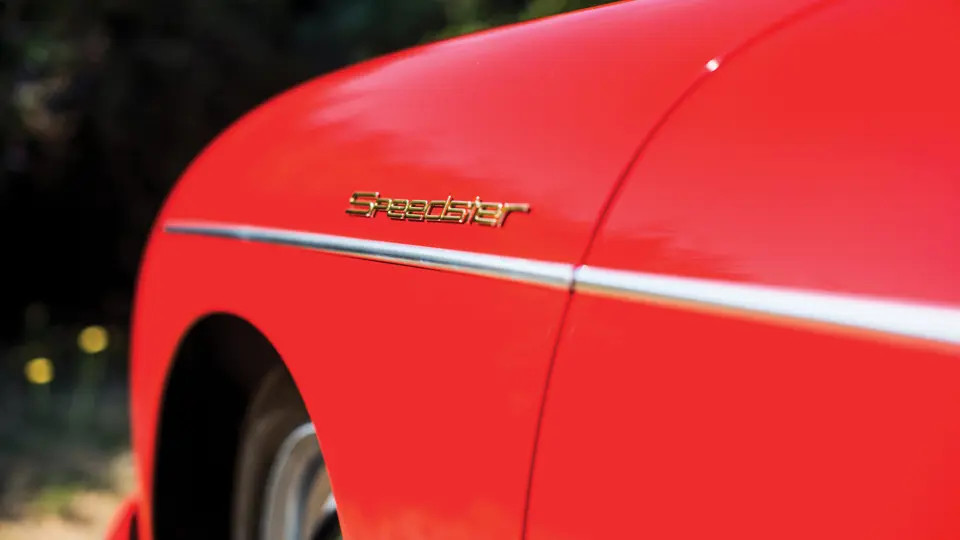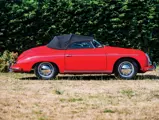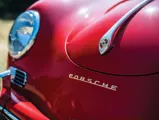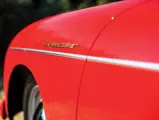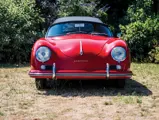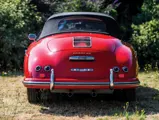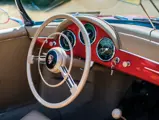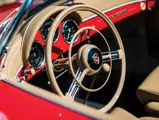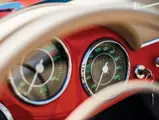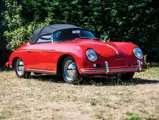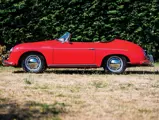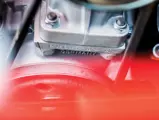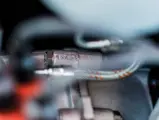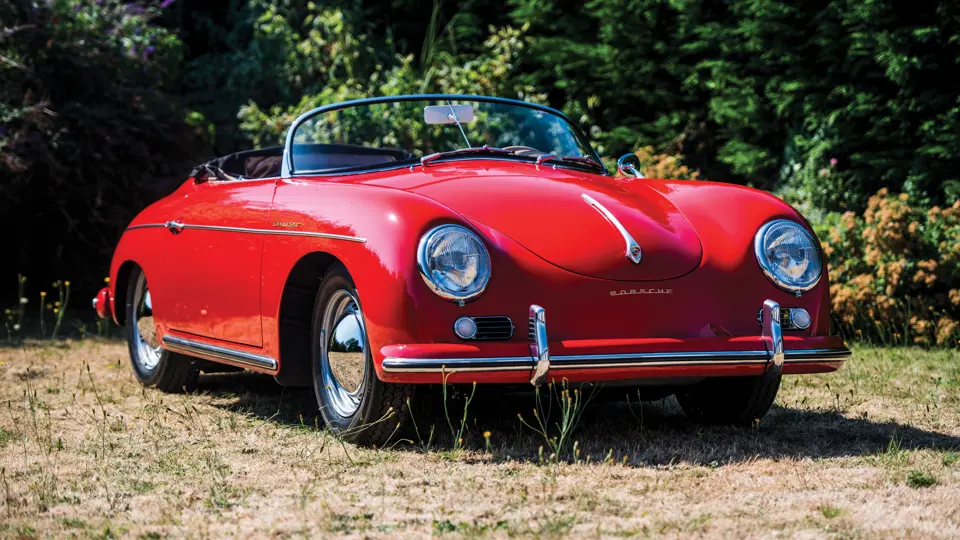
1957 Porsche 356 A 1600 Speedster by Reutter
{{lr.item.text}}
£320,000 GBP | Sold
{{bidding.lot.reserveStatusFormatted}}
- Half-century of single ownership by Woodstock Rock Festival producer Michael Lang
- Only three owners from new
- Retains its original and matching body panels
- Recently emerged from an exacting three-year European restoration
Rock icon Janis Joplin’s plaintive lament ‘Mercedes Benz’ was released in 1970, and it struck a chord across the rest of the musical community; more than a few of her contemporaries heard Janis observe that all her friends drove Porsches, and ‘I must make amends!’ It was an image that attracted many in the entertainment industry, and some looked around and saw that the diminutive 356 offered just the exotic aura they wanted to project. Janis of course bought a 356 Cabriolet, which one of her roadies adorned with psychedelic artwork. It has become one of the most recognisable and adored automotive artefacts of that era.
Another of those who took note was East Coast music producer and concert promoter Michael Lang. Mr Lang began his career as the owner of a head shop in Coconut Grove, Florida. He staged the Miami Pop Festival in 1968 and a year later, moved to bucolic Woodstock, New York, where on a shoe-string budget he would co-create the landmark Woodstock Music and Art Festival. While putting Woodstock together and running his music production business, Mr. Lang drove a rented Porsche 912, but on a business trip to the San Francisco Bay area – a hotbed of rock music in the period – Lang found himself driving past a small used car lot in the Marin County community of Mill Valley.
There, offered for sale, was a little green 356 A 1600 Speedster (T1). Mr Lang knew exactly what it was, and for several years he had thought about finding one. For the then-princely sum of $3,500, he drove the Speedster away. In a recent conversation with the Research & Editorial department of RM Sotheby’s, Mr Lang tells us that the car had recorded about 30,000 miles with its original owner and was in fairly good condition despite a repaint from its original red and an interior change from beige to black vinyl. It seemed in good shape mechanically, so he drove it south to Los Angeles, loaded it on a transporter, and shipped it home to upstate New York.
It would remain in his care for 50 years, driven regularly in nice weather and put away in the winter. The Speedster, he relates, ‘was the most fun car to drive in the world. I loved its shape. It was perfect for back country roads, and it never gave me any trouble. It always started and ran well.’ He estimates that he put about 10,000–15,000 miles on the car before deciding to have it restored. However, the project languished in the restoration shop, sprayed in red primer, for several years. Finally, unhappy with the lack of progress, Mr Lang reclaimed it, and lacking the time to oversee another restoration attempt, decided to give it a new home.
Lang’s Speedster was an early 1957 T1 and left the factory on the 7th of February 1957, wearing 601 Signal Red. The supplied factory Kardex lists the interior as Beige leatherette, which also meant tan square-weave carpeting above black rubber floor mats. The fabric folding top, side-curtains, and tonneau cover would have been black. Under the downswept tail was a Type 616/1 engine that produced a modest 60 hp at 4,500 rpm. Its accompanying factory Certificate of Authenticity notes that this U.S.-specification Speedster was factory fitted with sealed-beam headlamps and a full set of chromed tubular bumper over-riders to protect the otherwise vulnerable nose and rear end sheet-metal.
That low curb weight was a major part of the Speedster’s appeal; Speedsters were quickly recognized as a great platform for amateur racing and hill climbs in the U.S. and Europe. They were easy to prepare; drive to the track, unbolt the windscreen, pull off the hubcaps, pump up the tires, empty the front luggage bay, tape over all the lights and stick painted or taped numbers on the nose, tail and flanks. Rollbars were soon required, which meant that some Speedsters so-equipped could only be driven without their low-profile folding tops erected.
After 50 years of ownership, Mr Lang regretfully sold his Speedster, still in primer, to the consignor, a long-time friend and colleague in the music industry. In 2014, the car was shipped to Belgium for a complete restoration by Porsche specialist Technique Historique in Waterloo that consumed three full years. The consignor notes that all the body panels, including the doors, engine cover and front trunk lid, are original and retain their unique serial numbers. The engine case, while believed to be original, was apparently replaced early in the car’s life and carries a re-stamped number. The engine internals are believed to be original to this car. Although it is currently fitted with a pair of Weber down-draught carburettors for improved drivability, the original twin Zeniths are included. A new Sigla windscreen was installed to replace the cracked original.
Today, this beautiful Speedster may be among the best and most interesting in the world. The interior presents as new, and the deep, well-ventilated semi-competition bucket seats are very inviting. The underside and suspension are as equally well-finished to original standard as the upper surfaces and interior. It is supplied with a correct spare wheel and tire, jack and tool roll, and the original road wheels are also included.
No serious collection of early Porsches is complete without at least one example of this iconic sports car. Here is a wonderful example that will undoubtedly please the most discerning enthusiast.
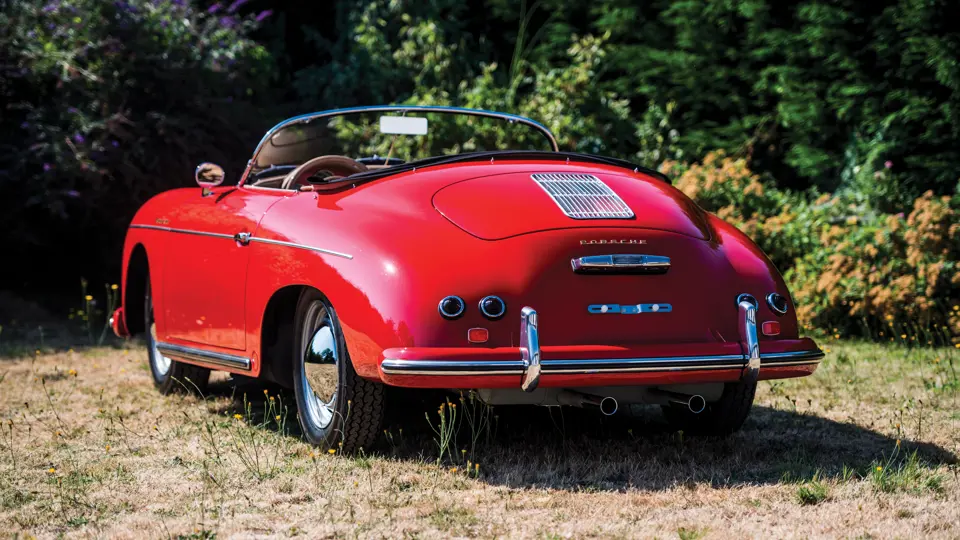



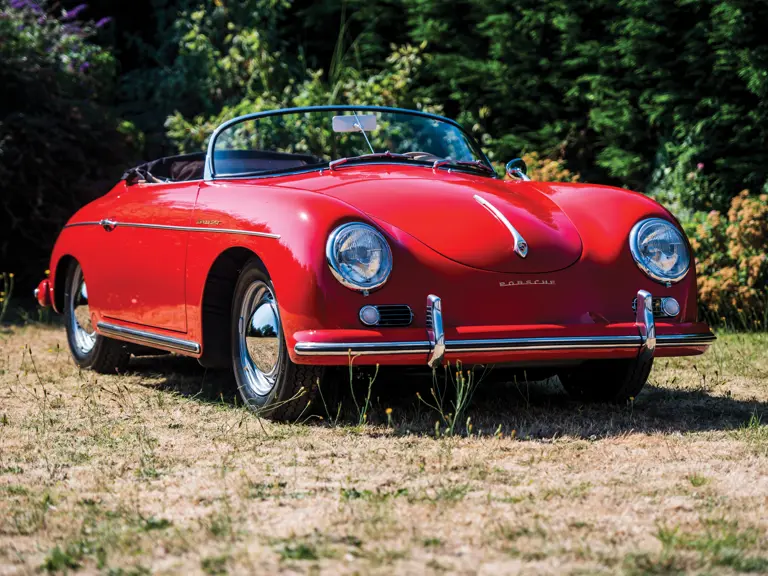
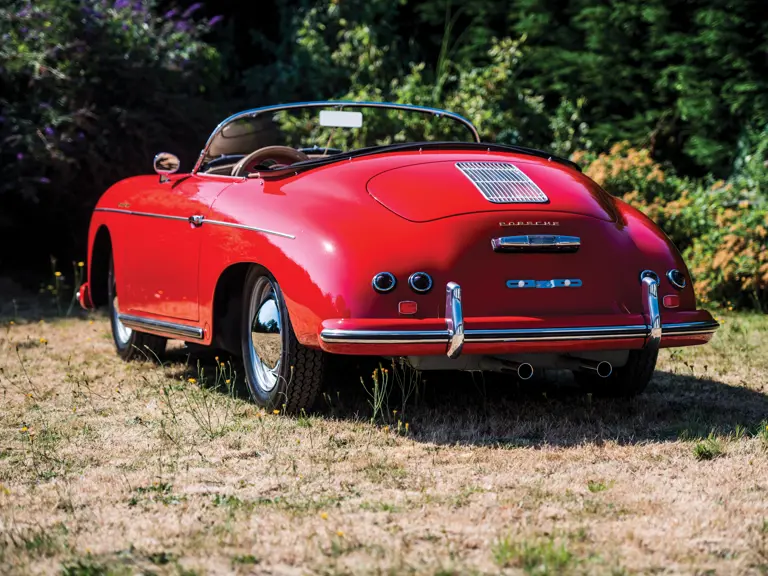

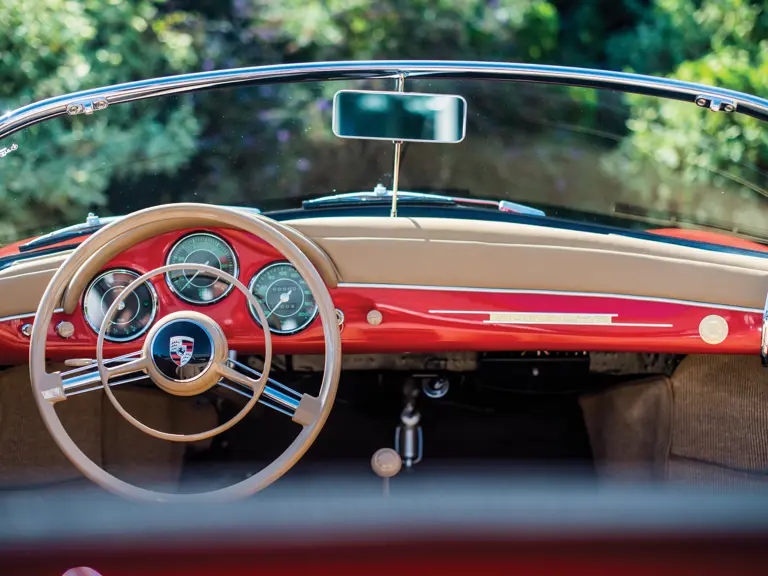

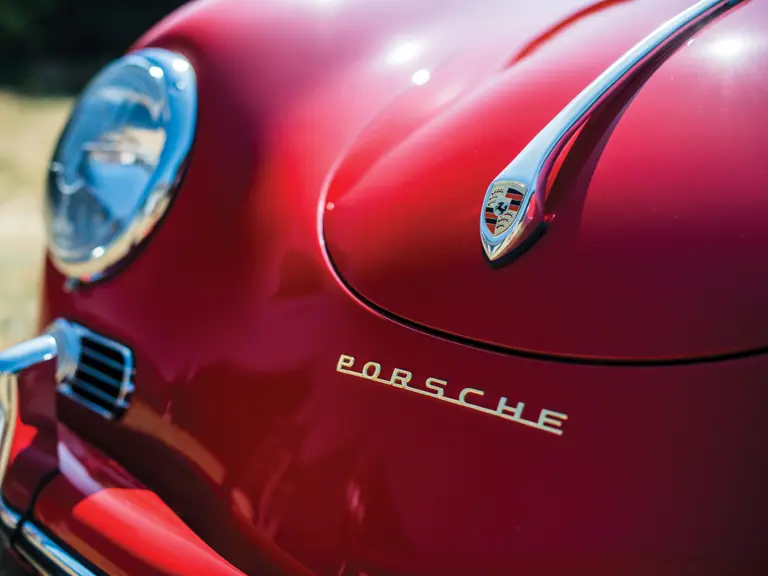
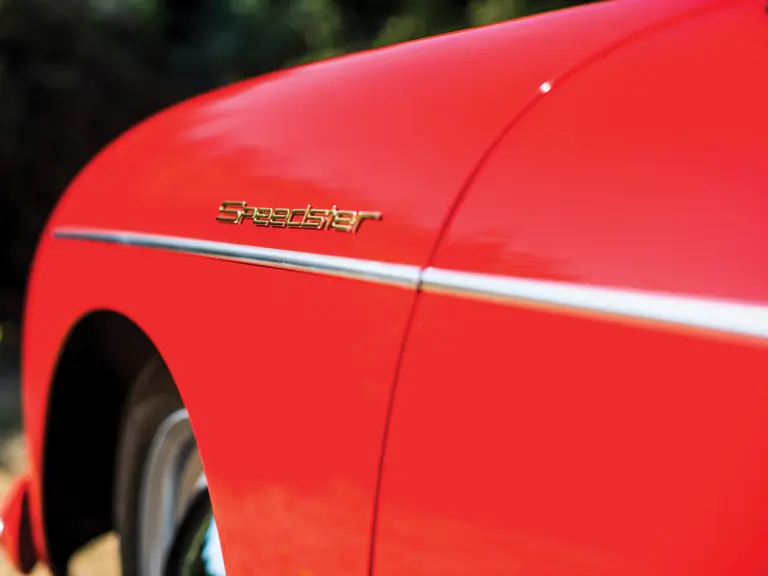
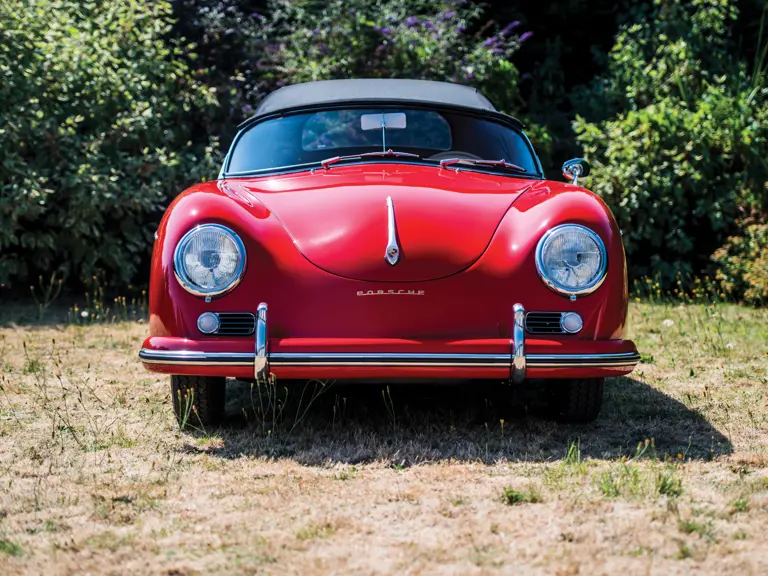
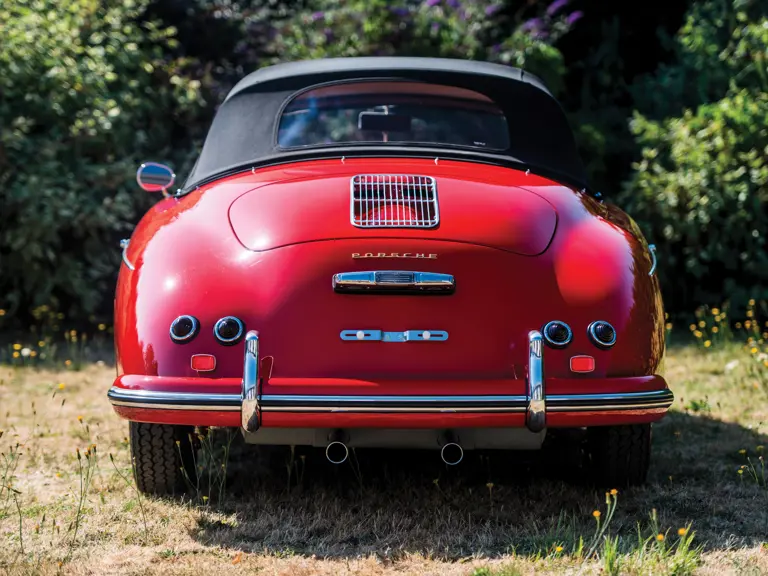
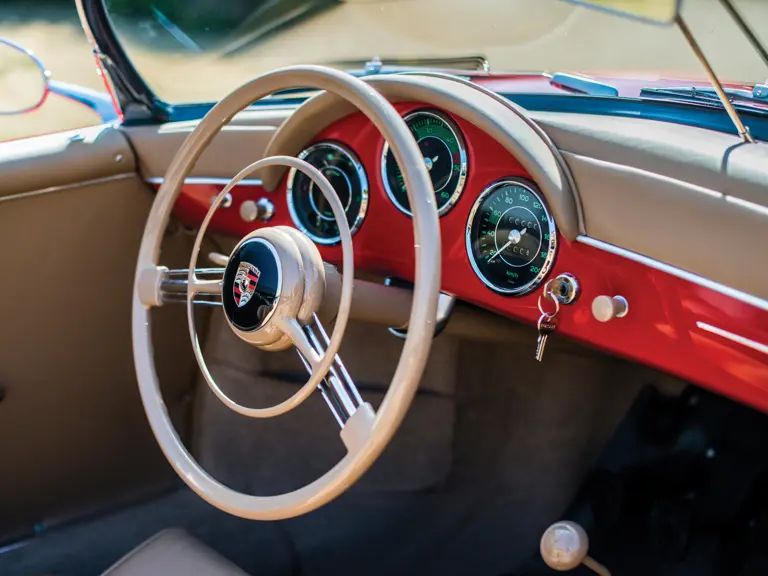
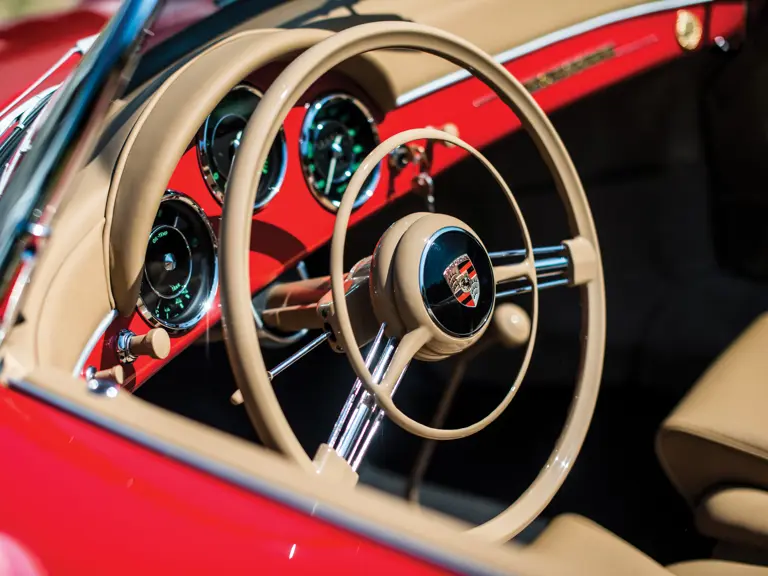
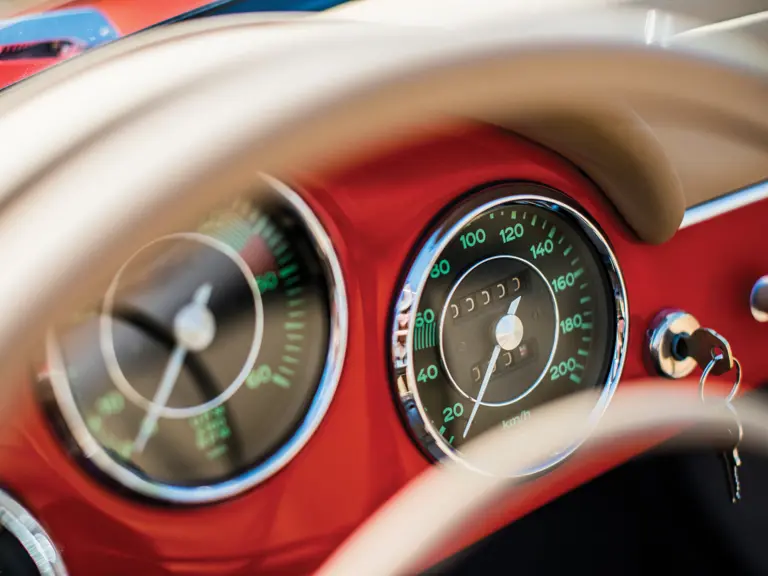
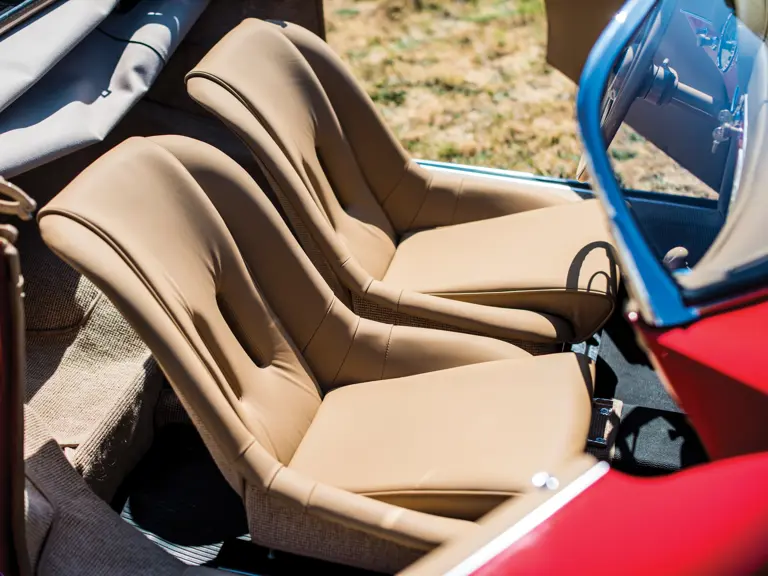

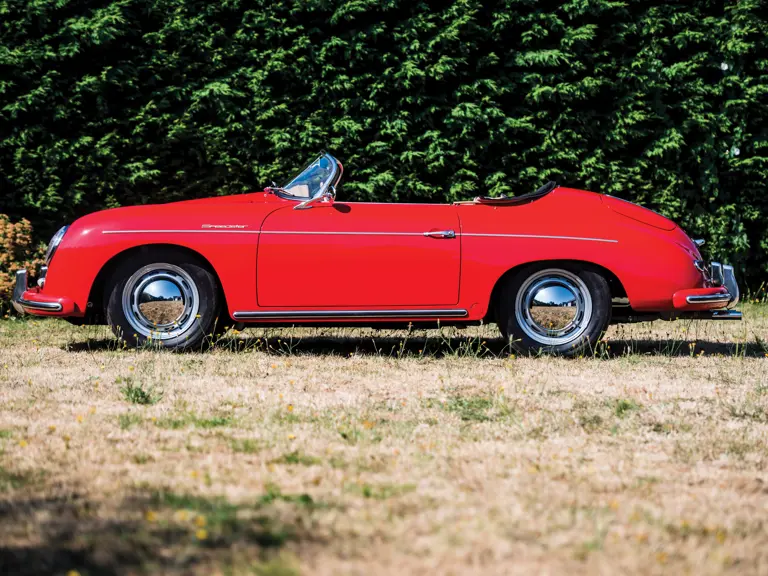
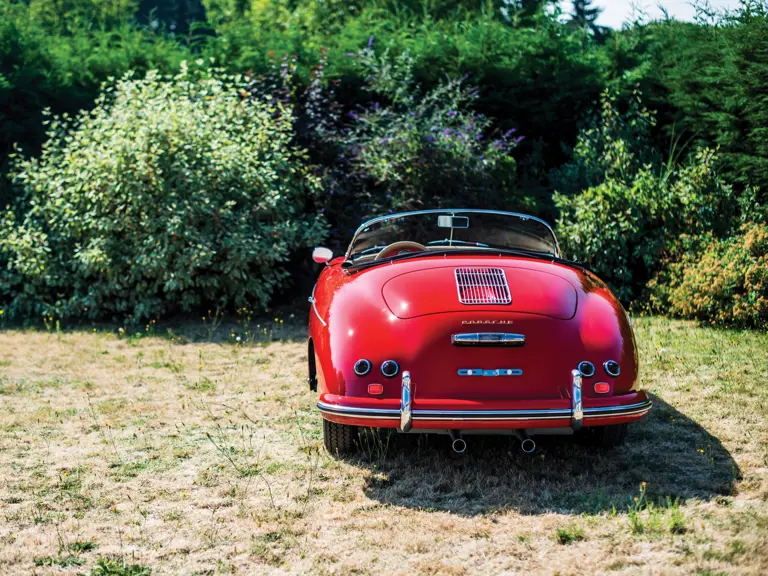
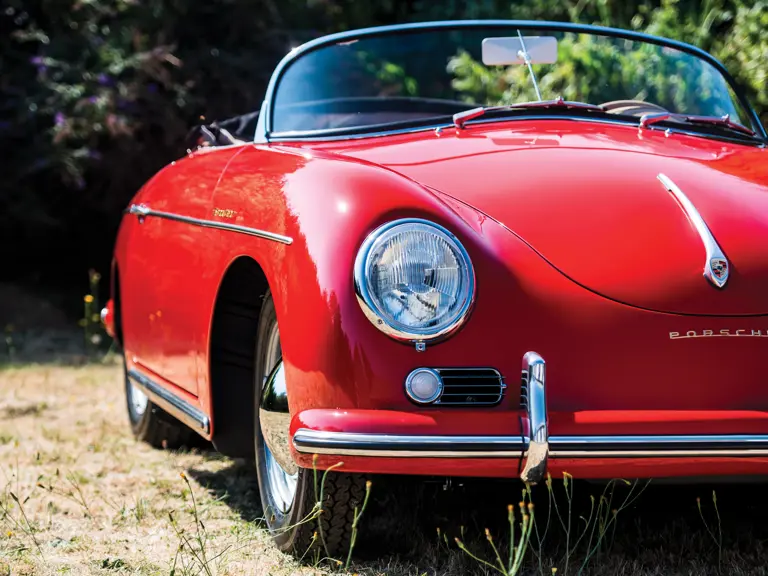
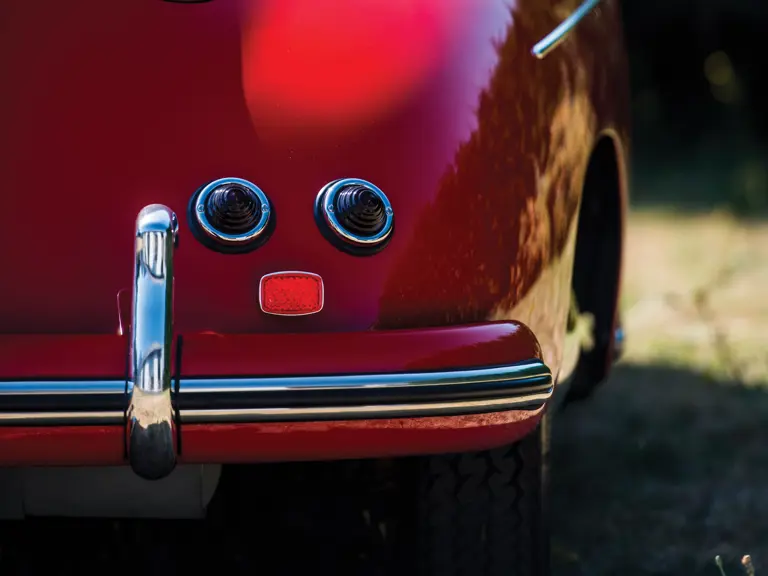

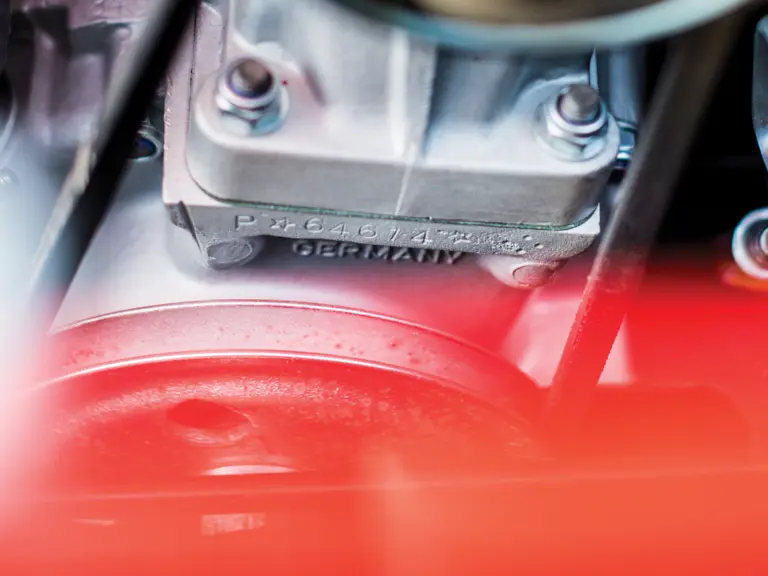
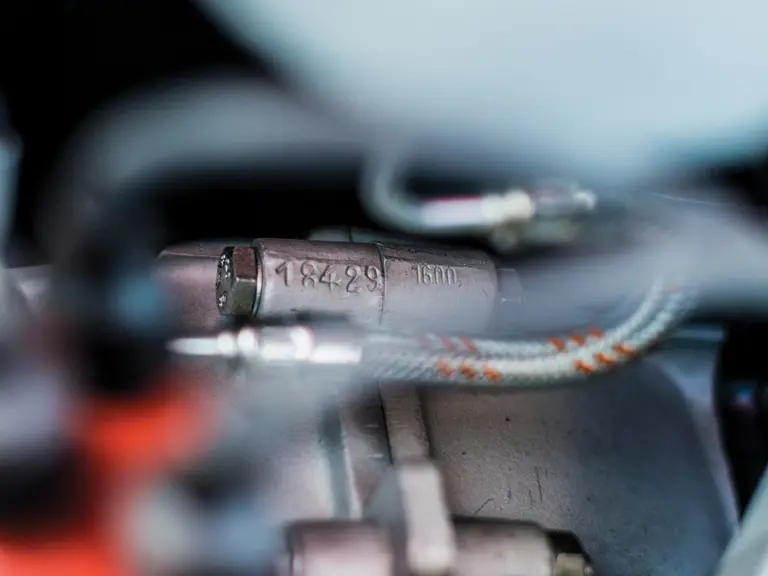
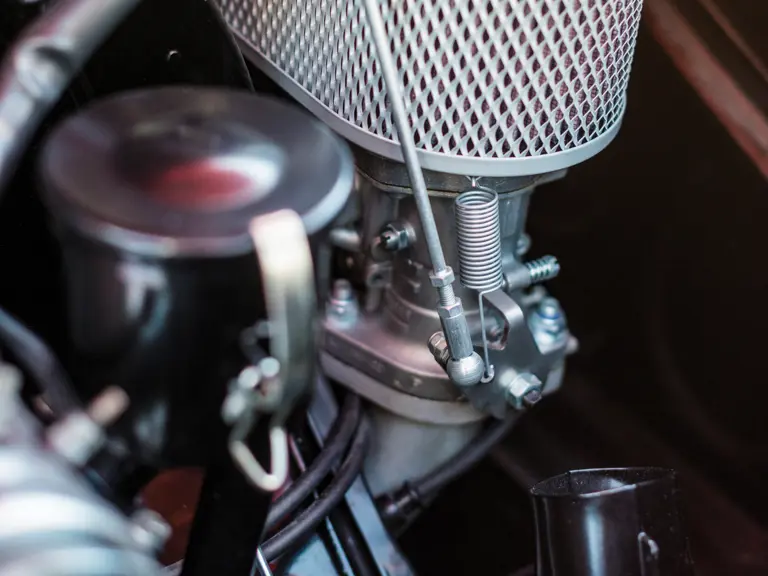
 | London, United Kingdom
| London, United Kingdom
